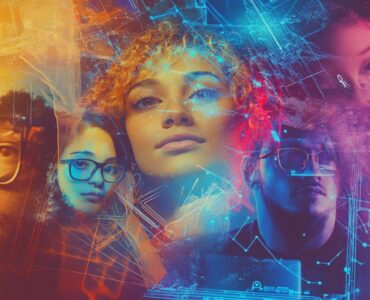AI-generated content has reached a new frontier — stylised imagery with erotic or suggestive undertones, often inspired by manga or anime styles. Commonly known as AI hentai generators, these tools raise questions beyond mere technical performance. They sit at the intersection of art, consent, legality and digital safety. In this article, we will:
- Define what AI hentai generation involves and how it works
- Analyse the ethical challenges and social impact of such content
- Explore the legal and regulatory landscape in the UK and beyond
- Highlight moderation strategies and technical safeguards
- Recommend responsible practices for developers, platforms and users
What is meant by “AI hentai generator”?
In essence, an ai hentai generator refers to a software tool that uses machine learning — often diffusion models or GANs — to create anime-inspired images with erotic or semi-erotic themes. These systems generate AI-generated erotic imagery based on text prompts, enabling users to visualise stylised content that may mimic commercial or fan-made art.
There is a crucial distinction between suggestive art and explicit content. This article focuses on the former, deliberately avoiding discussion of graphic imagery. The model design of such tools typically includes safety filters to prevent extreme results, although these can sometimes be bypassed.
These tools rely heavily on curated or scraped datasets, whose composition has direct implications on style, bias, and ethical concerns.
Ethical Challenges & Risks
Consent and depiction of likeness
One of the most pressing issues is the depiction of likeness without permission. When AI-generated images resemble real individuals, especially in suggestive scenarios, it raises severe privacy and consent issues. This risk becomes greater when facial features are cloned or interpolated into synthetic art.
Non-consensual misuse and deepfake risks
Deepfake risk is a well-known challenge in the AI space. Although soft AI-generated content might not always cross legal lines, it can still produce non-consensual imagery or fictionalised likenesses with disturbing implications. The use of adversarial prompts to bypass safety filters is a known strategy to exploit vulnerabilities in models.
Social impact, representation, and gender bias
These systems often reflect and reinforce existing gender biases present in training data. Over-sexualisation of specific body types or roles may result in skewed representations. The broader social risk is the normalisation of stylised sexual content without critical context or user consent guidelines.

Legal & Regulatory Landscape (UK & international)
UK legislation and liability
The UK’s Online Safety Act 2023 introduces new duties of care for platforms, requiring them to moderate content and prevent the sharing of intimate images without consent — including those generated by AI. Additional amendments to the Sexual Offences Act have extended legal protections to cover deepfake content.
Creators or distributors of such imagery may now face prosecution, especially when identifiable individuals are involved, regardless of whether the image was artificially created or not.
Copyright, authorship and AI-generated work
Another major question involves copyright ownership of AI-generated images. If the dataset licensing is unclear or includes copyrighted material, the generator could inadvertently violate intellectual property law. Moreover, images created by AI are often considered to lack human authorship, complicating legal attribution.
International comparisons
Other countries have adopted varying approaches. Some are stricter — banning AI-generated sexual content outright — while others are lagging in legislation. Jurisdictional enforcement challenges remain, especially when such content circulates across borders via anonymous platforms.
Technical Safeguards & Moderation Approaches
Most responsible platforms implement safety filters, prompt monitoring and NSFW classifiers to moderate content. Some models use watermarking techniques to trace image origins or embed metadata to signal AI generation. These measures aim to detect misuse and maintain accountability.
However, filter bypass attacks through rephrased or adversarial prompts remain a threat. More advanced methods, such as classifier-guided generation or watermark traceability techniques, are being explored.
Responsible Use, Best Practices & Recommendations
For developers, incorporating clear transparency measures, limiting prompt access, and embedding invisible watermarks can significantly reduce harm. Curating datasets ethically and including opt-out options for content creators also enhances trust.
Platforms should implement strong age verification, user reporting tools, and transparent content policies. User guidelines and warning labels can prepare viewers for what to expect and encourage responsible consumption.
Ultimately, users themselves must be aware of the limits, both ethical and legal. Consent, privacy and context should govern all interactions with this emerging content type.
Future Trends & Challenges
As legislation continues to evolve, we may see further model design constraints and perhaps bans on certain types of generative apps, such as nudification tools. The implementation of watermark or signature embedding will likely become standard, while research into filter robustness and explainable AI progresses.
The key challenge will be balancing innovation with regulation — enabling creativity while preventing exploitation or harm. Expect tighter collaboration between lawmakers, technologists and platforms.
What You Need to Know Moving Forward
AI-generated erotic imagery sits at a complex crossroads of technology, ethics and law. While its potential as stylised artistic content is undeniable, it brings with it real concerns about consent, misuse, and accountability.
In the UK and globally, regulators are responding — tightening rules around deepfake risk and privacy rights. As platforms deploy moderation tools and watermarking, developers and users alike must mitigate risks and safeguard personal integrity.
To responsibly explore this technology, remember to:
- Disclose when content is AI-generated
- Respect likeness and consent boundaries
- Filter prompts and content with care
- Comply with platform and legal policies
Staying informed is essential. As tools evolve, so must our ethical lens. If you operate in this space — whether as a creator, user or platform — take time to analyse the landscape and enforce good practice.




